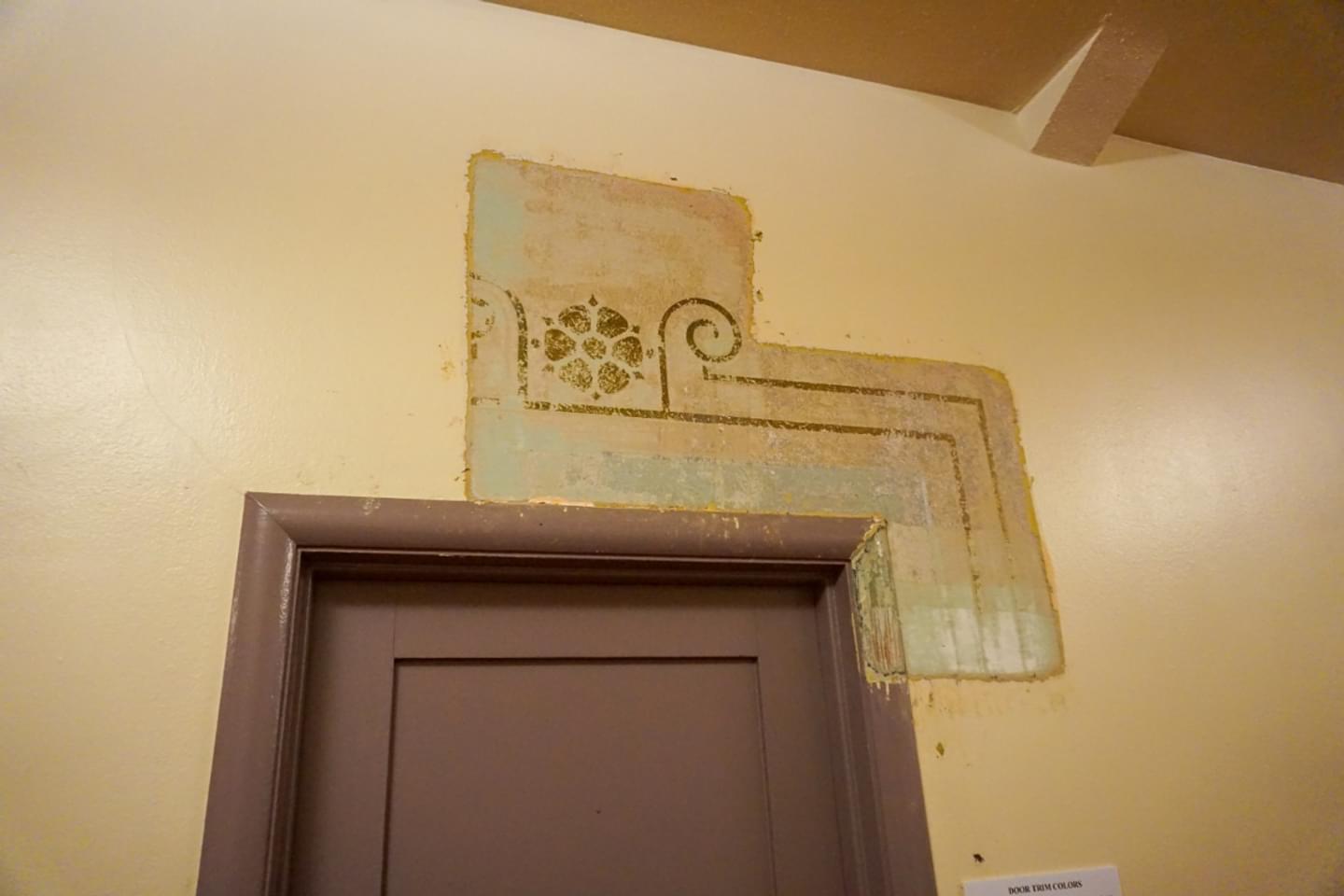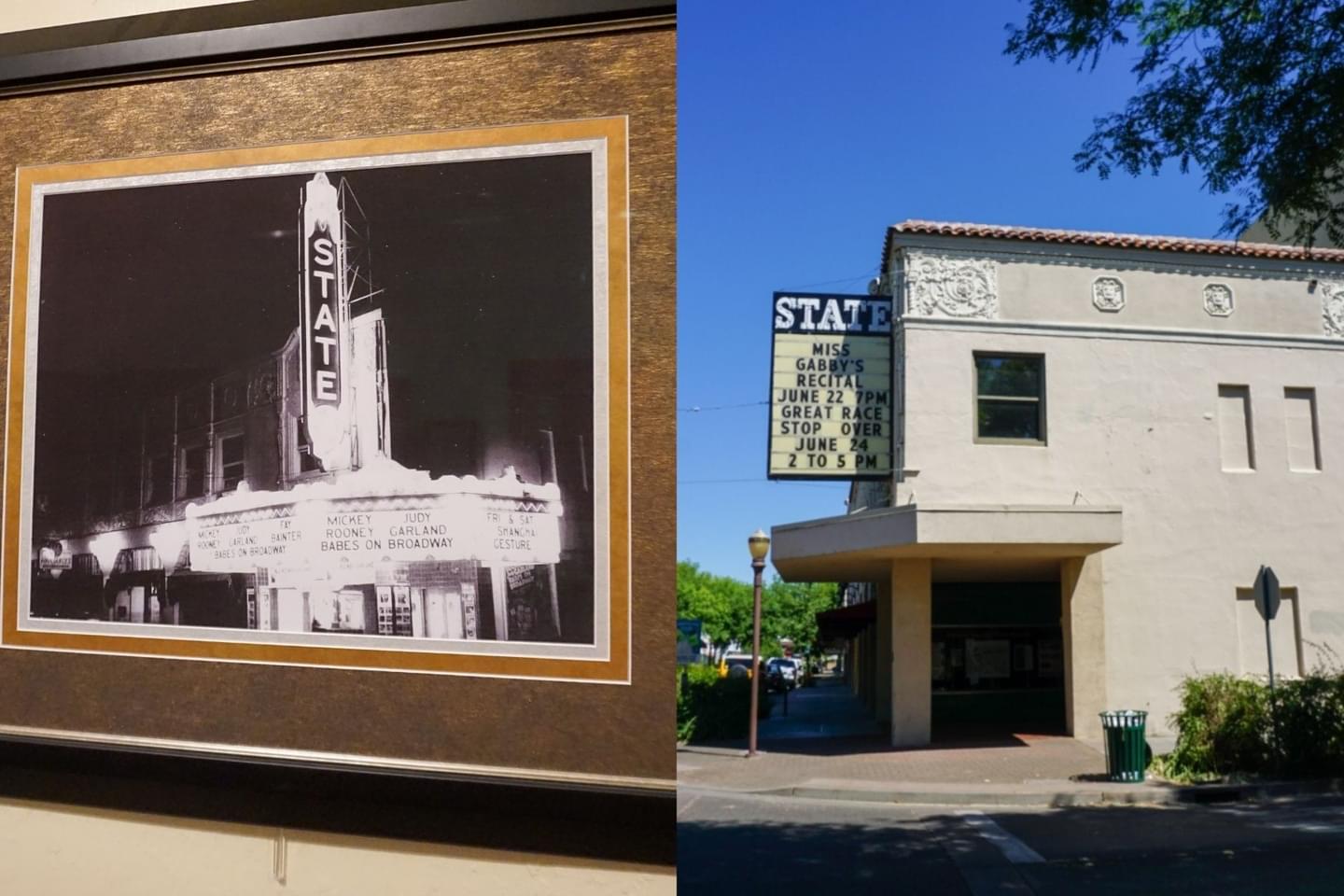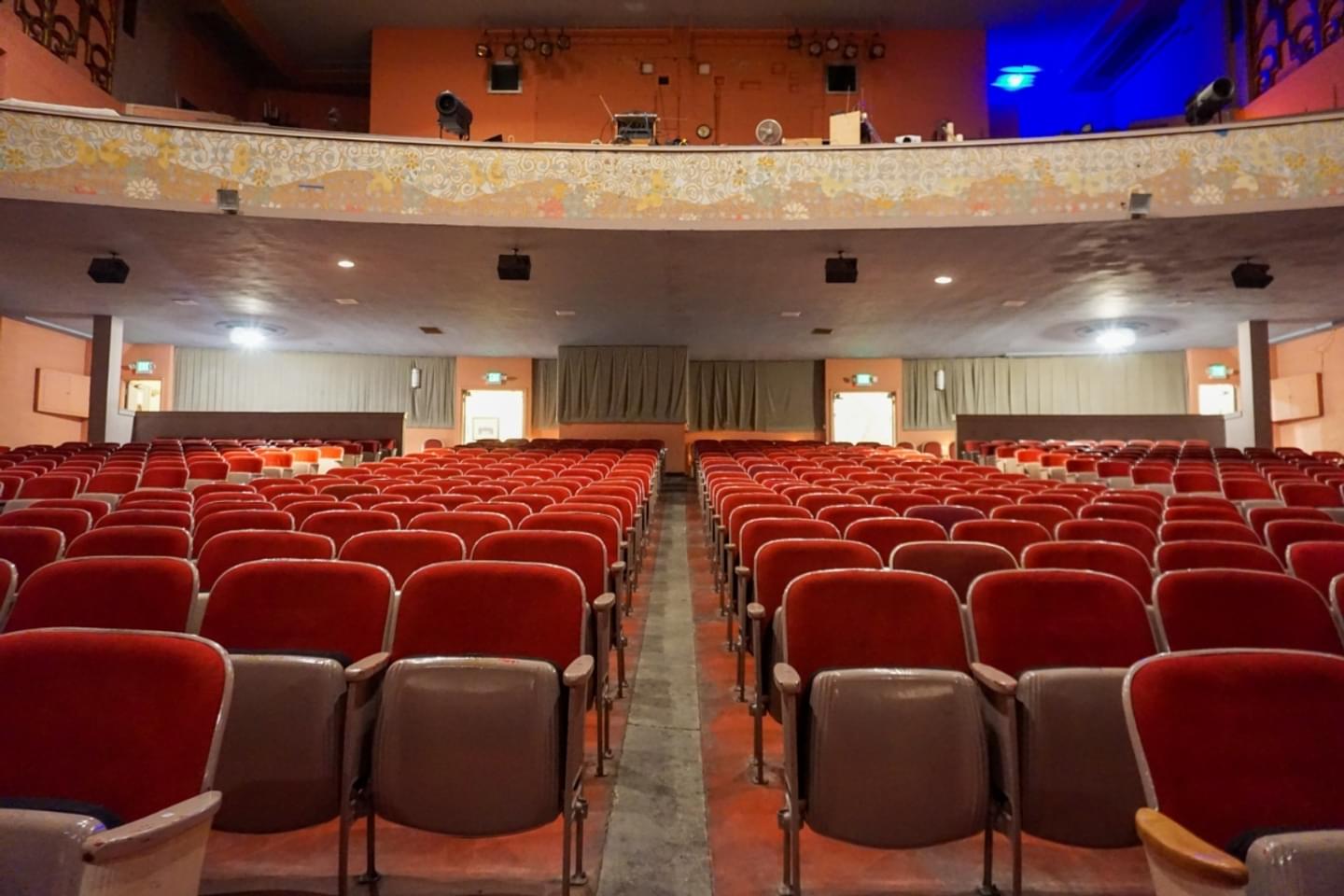Since 1927, the now-historic Oroville State Theater has been a centerpiece of the Downtown Oroville landscape.
Built by renowned California architect Timothy Pflueger, with its first performance on April 7, 1928, the State Theater started its life as a vaudeville theater. In the style of the time, it was ornately decorated and equipped with a Wurlitzer organ.
Over the decades, though, as it moved from silent movies to contemporary blockbusters, from one owner to another, those original flourishes disappeared — painted over, removed, shrunk, or otherwise forgotten.
The State Theater Arts Guild (STAGE), the all-volunteer group that operates and manages the theater, wants to change that by returning the building to its original appearance and ambiance.
Seeing the Present Progress
When you walk into the State Theater, you can see the progress, though in this case, it’s one of those situations where things have to get worse before they get better. Walking through the doors, standing at the entrance, and taking in the entire space, it feels somewhat rundown, with strips of paint missing on one wall here, a bit of the ceiling there, with a general air of incompleteness.

Uncovering the Past
But stepping closer, the State Theater’s past begins to take present shape.
Rather than from disrepair, the strips of missing paint in the lobby are intentional. Peeling away the nearly 10 layers of paint from all the changes over the decades, STAGE found the original colors and decorative finishes from the 1920s and 1930s. Along with historical photos of the building from its glory days, STAGE is using those stripped samples to repaint and renovate the State Theater and bring it back to its “period of greatest influence,” generally considered between 1934 and 1948, with that signature art deco influence.
Some of those photos are displayed in the State Theater’s lobby. Black and white framed photographs from various points of the theater’s life show the changes over the decades. You can see why STAGE is working so hard to bring the past into the present: in 1941, the theater had an ornate, brightly lit marquee and conspicuous “State” sign that puts the current design to shame. Bringing back that glamor would make the State Theater once again shine downtown.

From Bold to Bland
Built for and operated by T&D Jr. Enterprises, which also owned the Senator Theater, the State Theater’s original design reflected a time when going to a movie was still considered a capital E Experience.
But when United Artists bought the Theater in the late 1970s, they “modernized” it, painting over or changing most of the remaining original flourishes, and “twinning” the theater with a dividing wall so they could show two movies at a time. By the time United Artists sold the State Theater to the City of Oroville in 1983, much of the spirit that was built into the Theater in 1927 was lost.
Aesthetically, the curious (if not slightly lurid) paint schemes and design elements — green art deco chandeliers, gold and silver striping, taupe and green walls — had been removed or painted over. Functionally, the once nearly 1,600-seat auditorium now only held 600. The seats, which were originally in a bowl structure with better views and air flow, now stood in straight lines. The live performances that defined its inception were few and far between, as the State Theater operated primarily as a film theater.

Bringing the Past to the Present
The City owned the State Theater for more than 30 years, removing the dividing wall, cleaning the interior, and managing the upkeep. But in 2014, the Oroville City Council approved a contract allowing STAGE to operate and manage the State Theater, allowing the group to continue the work it had long been doing and bringing stability to the process.
Under STAGE, the team of volunteers and supporters have come together to be a part of the ongoing “Miracle on Myers Street,” the community project named for sustaining the Theater’s day-to-day operations and promoting the dream of its complete restoration.
This summer, that includes installing new carpet and a replica of the original water fountain, repainting the lobby, completely uncovering a mural on the staircase, and putting in the “new” old marquee to replace the current plain one.
The Mighty Wurlitzer Pipe Organ
STAGE will also continue renovation on a Wurlitzer organ that was returned to the theater in 2018, thanks to the support of benefactors and ongoing individual citizens’ donations. The State Theater secured the instrument in 2009, but it lived in pieces in storage near the Oroville levee until the 2017 spillway incident. Everyone then realized it was time to bring the organ, which has some mechanisms dating back to 1914, to the Theater.
The State Theater originally had an organ, but it was removed when the silent film era ended; today, With about 1,200 pipes connected to dozens of instruments, the Wurlitzer is one of the most expensive and time-consuming parts of the overall restoration — but it’s well worth the effort. Played for select performances and special occasions, the sounds of the organ fill the auditorium and drift into the lobby, transporting you back to State Theater’s heyday.
If you close your eyes and listen, you can almost see what the Theater was like 90 years ago — and where its supporters hope it will be in the future.
Updates 5/18/2020
The Fall 2019 reopening of the State Theater revealed the new digital marquee, which shines brightly in Downtown Oroville. Inside, visitors will see the updated water fountain, art deco detailing on the ceiling, and the renovated mural on the stairs. Restorations are ongoing—donate to help STAGE continue its efforts.






